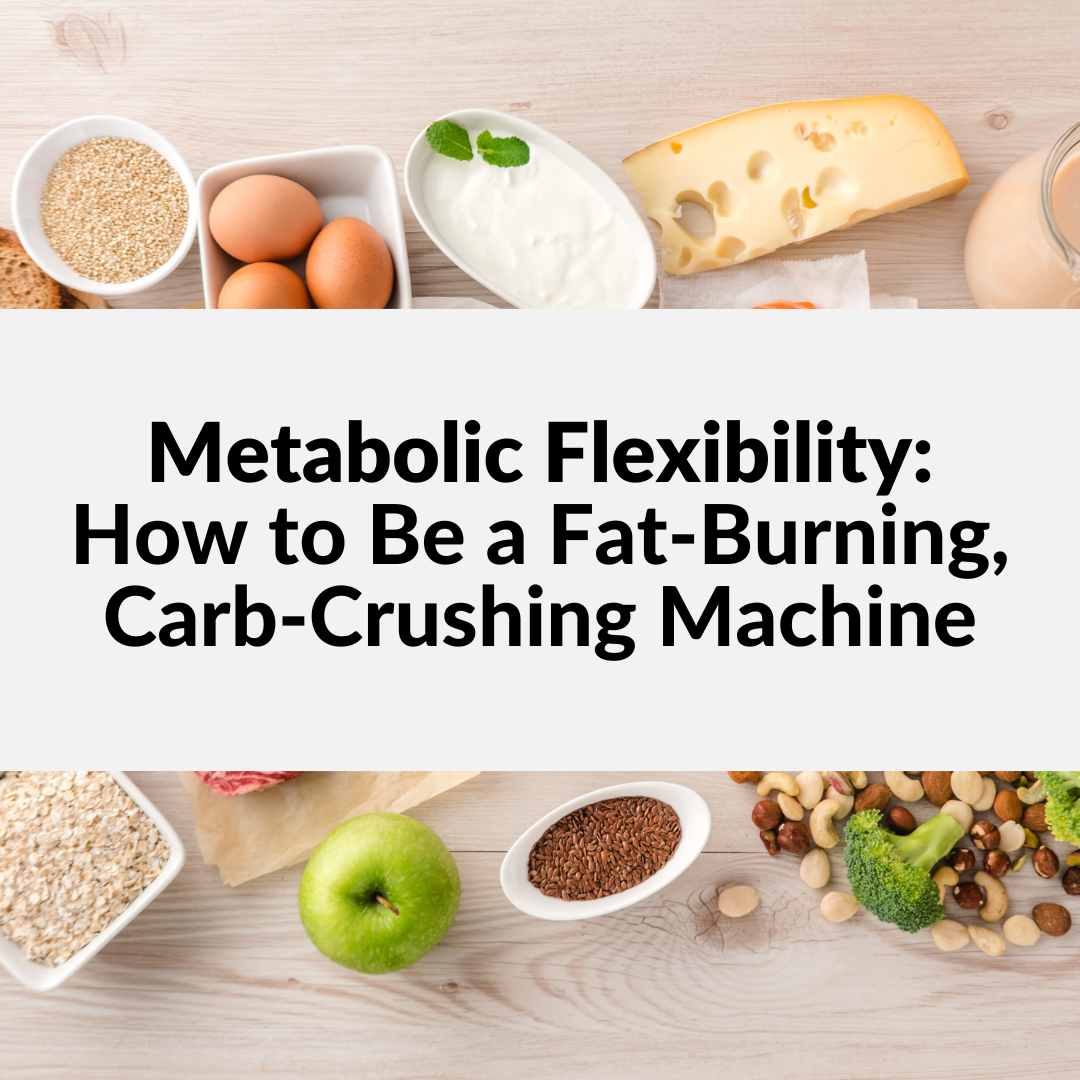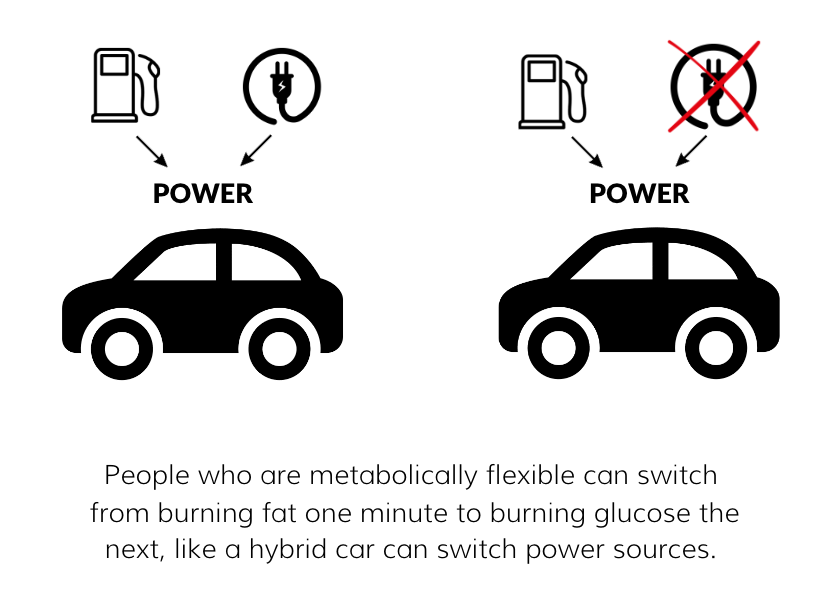
Imagine your body as an engine that can seamlessly switch between different fuel sources to keep you energized, focused, and strong. This capability is the cornerstone of mental and physical performance. It’s called metabolic flexibility. Whether you’re an athlete, a busy professional, a dedicated parent striving for better health, or all three, understanding metabolic flexibility can transform how you look, feel and function. Let’s dive into the details and discover how you can unlock the full potential of this metabolic state.

What is Metabolic Flexibility?
Metabolic flexibility is the “having your cake and eating it too” of nutrition. Your body can switch between burning carbs and fats for fuel. If you have good metabolic flexibility, your body efficiently uses fuel from different macronutrients (carbohydrates and fat). When you are metabolically inflexible, you can often see insulin resistance, which is when the cells in your muscles, liver and fat don’t respond well to insulin/blood glucose (sugar) regulation.
The easiest way to get your body to be more metabolically flexible is to pair what you are eating with the activity your body is performing. For example, eating most of your carbohydrates around your workouts and exercise and higher fat foods/meals when you are more sedentary, like working a desk job, watching TV, and driving kids around to activities.
When we are sedentary, our body prefers to use fat as fuel.
When we are active, our body prefers to use carbs as fuel.
Why we love metabolic flexibility:
- Energy on Demand: Say goodbye to those annoying mid-afternoon slumps. You’ll have energy whether you’re running a marathon or running errands.
- Better Blood Sugar Control: Your body handles carbs like a boss, keeping your blood sugar levels stable and those hangry episodes at bay.
- Fat Burning Mode: Your body becomes a fat-burning furnace, making weight management easier. Who doesn’t want that?
Other areas that help most metabolism
- Get Moving: Exercise isn’t just about looking good; it’s about feeling good too. Mix in high-intensity interval training (HIIT) with steady-state cardio and weight lifting. Variety is the spice of metabolic life.
- Eat Real Food: Focus on whole, nutrient-dense foods. Think veggies, lean proteins, and healthy fats. Your body can’t thrive on junk.
- Sleep Like a Baby: I know, easier said than done, especially if you’re a mom (trust me, I get it). But quality sleep is crucial. Aim for 7-9 hours a night. Your metabolism needs its beauty rest too.
- Glucose monitoring: We know there are links between glucose, metabolic flexibility, and metabolic health. Having an understanding of how your body responds to food, drink, exercise, sleep, and stress can help you tweak your food to work better for you.
- Intermittent fasting: This topic is so big it could be an article itself. Fasting is a great way to train your body to switch between burning glucose (carbohydrates) and burning fat for fuel. During periods of fasting, your insulin levels drop, facilitating fat burning. Lower insulin levels allow your body to access stored fat more easily, potentially leading to weight loss and improved metabolic health. However, fasting is not suitable for everyone, particularly perimenopausal women. While intermittent fasting can boost metabolism in some individuals, it can have the opposite effect in peri-menopausal women. The body perceives prolonged fasting as a stressor, leading to a slowdown in metabolic rate to conserve energy. This can hinder weight loss efforts and even cause weight gain for women going through many hormonal changes during this stage of life.
Metabolic flexibility is the secret to giving your body the tools to be efficient and adaptable. Harnessing the power will be a game-changer for your health. So, mix up your diet, move that body, and get more sleep. Your metabolism will love you for it, and you’ll love the results.
Sources:
Leave a Comment
You must be logged in to post a comment.
0 Comments